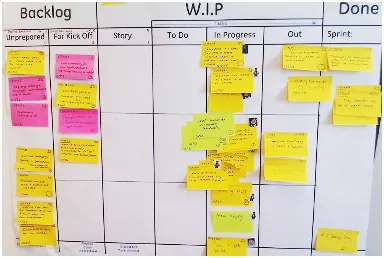
Practical DevOps
Implement DevOps in your organization by effectively building, deploying, testing, and monitoring code, 2nd Edition
Joakim Verona
- 250 pages
- English
- ePUB (mobile friendly)
- Available on iOS & Android
Practical DevOps
Implement DevOps in your organization by effectively building, deploying, testing, and monitoring code, 2nd Edition
Joakim Verona
About This Book
Understand the benefits of DevOps and continuous delivery and see how they support the agile software development processAbout This Book• Learn how DevOps can accelerate your entire software development life cycle• Improve your organization's performance to ensure the smooth production of software and services• Get hands-on experience in using efficient DevOps tools to better effectWho This Book Is ForIf you're a developer or system administrator looking to take on larger responsibilities and understand how the infrastructure that builds today's enterprises works, this is the book for you. This book will also help you greatly if you're an operations worker who would like to better support developers. You do not need any previous knowledge of DevOps to understand the concepts in this book.What You Will Learn• Understand how all deployment systems fit together to form a larger system• Set up and familiarize yourself with all the tools you need to be efficient with DevOps• Design an application suitable for continuous deployment systems with DevOps in mind• Store and manage your code effectively using Git, Gerrit, Gitlab, and more• Configure a job to build a sample CRUD application• Test your code using automated regression testing with Jenkins Selenium• Deploy your code using tools such as Puppet, Ansible, Palletops, Chef, and VagrantIn DetailDevOps is a practical field that focuses on delivering business value as efficiently as possible. DevOps encompasses all code workflows from testing environments to production environments. It stresses cooperation between different roles, and how they can work together more closely, as the roots of the word imply—Development and Operations.Practical DevOps begins with a quick refresher on DevOps and continuous delivery and quickly moves on to show you how DevOps affects software architectures. You'll create a sample enterprise Java application that you''ll continue to work with through the remaining chapters. Following this, you will explore various code storage and build server options. You will then learn how to test your code with a few tools and deploy your test successfully. In addition to this, you will also see how to monitor code for any anomalies and make sure that it runs as expected. Finally, you will discover how to handle logs and keep track of the issues that affect different processes.By the end of the book, you will be familiar with all the tools needed to deploy, integrate, and deliver efficiently with DevOps.Style and approachThis book is primarily a technical guide to DevOps with practical examples suitable for people who like to learn by implementing concrete working code.
Frequently asked questions
Information
Issue Tracking
What are issue trackers used for?

Some examples of workflows and issues
- Description: This is a free-form textual description of the issue
- Reporter: This represents the person who opened the issue
- Assigned: This is the person who should work on the item
- Due date: The date on which the issue is expected to be resolved.
- Milestone: A milestone is a way to group issues together in useful work packages that are larger than a single issue. A milestone can represent the output from a Scrum Sprint, for example. A milestone usually also has a due date, and if you use the milestone feature, the due dates on individual issues are normally not used.
- Attachments: It might be convenient to be able to attach screenshots and documents to an issue, which might be useful for the developer working on the issue or the tester verifying it.
- Work estimates: It can be useful to have an estimate of the expected work expenditure required to resolve the issue. This can be used for planning purposes. Likewise, a field with the actual time spent on the issue can also be useful for various calculations. On the other hand, it is always tricky to do estimates, and, in the end, it might be more trouble than it's worth. Many teams do quite well without this type of information in their issue tracker.
- Open: The issue is reported, and no one is working on it as of yet.
- In progress: Somebody is assigned to the issue and working on resolving it.
- Ready for test: The issue is completed and is now ready for verification. It is unassigned again.
- Testing: Someone is assigned to work on testing the implementation of the issue.
- Done: The task is marked as ready and unassigned once more. The done state is used to mark issues to keep track of them until the end of a Sprint; for example, if the team is working with the Scrum method.
- Closed: The issue is no longer monitored, but it is still kept around for reference.
What do we need from an issue tracker?
- What scale do we need? Most tools work well on scales of up to about 20 people, but beyond that we need to consider performance and licensing requirements. How many issues do we need to be able to track? ...